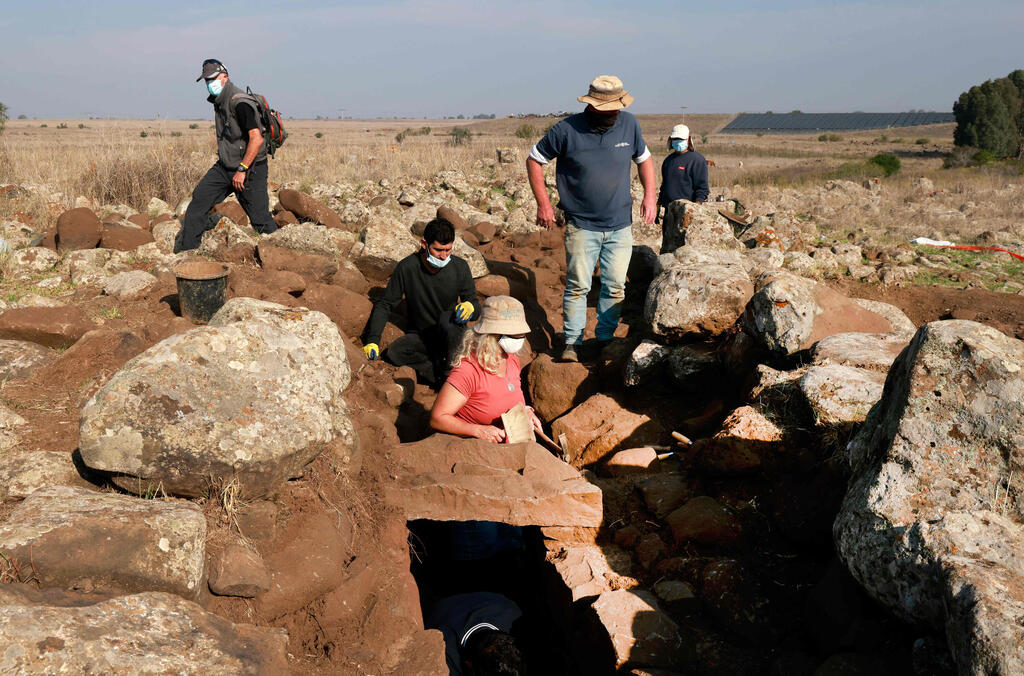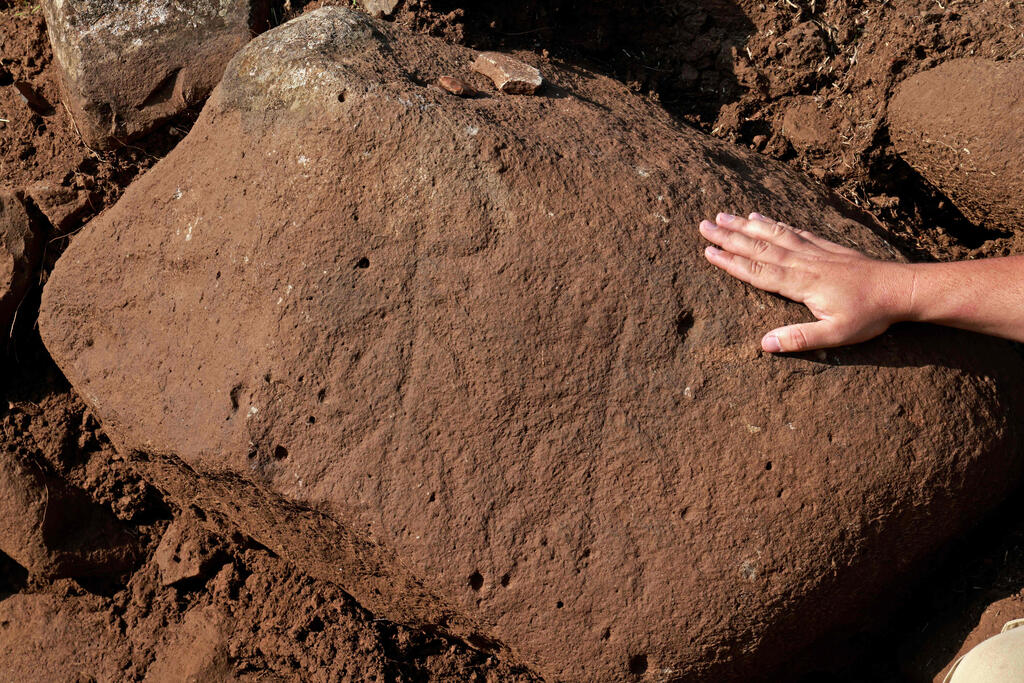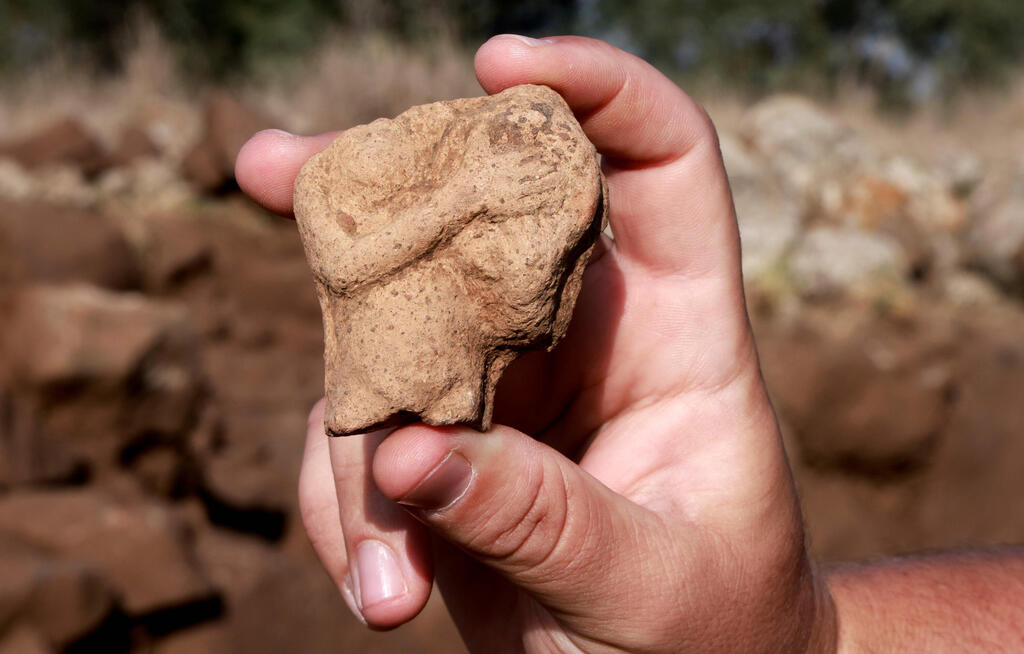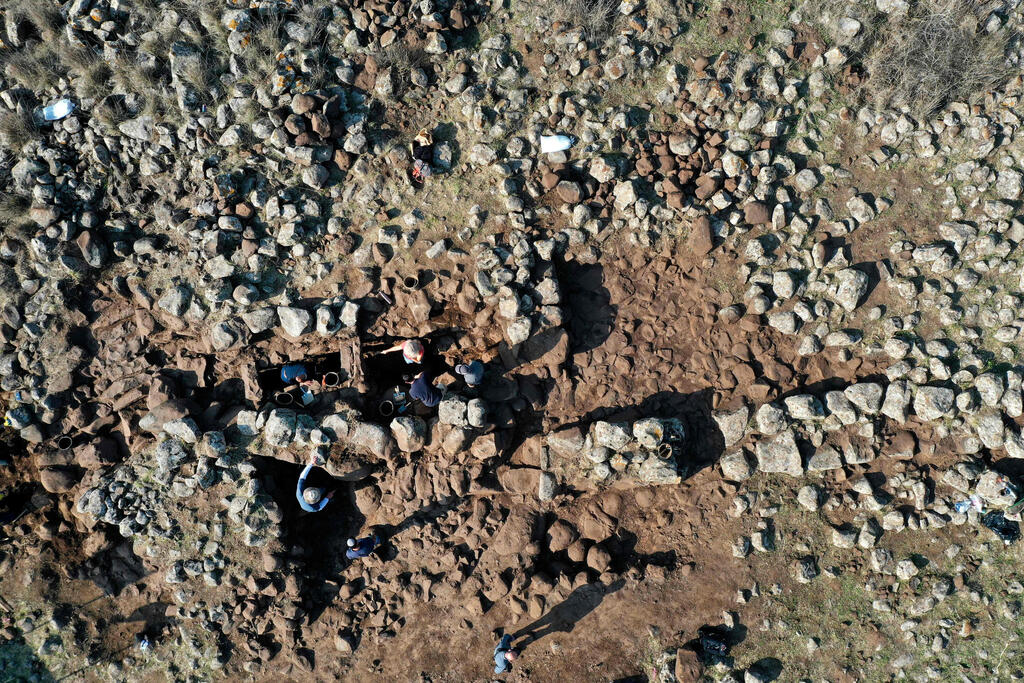Archaeologists on Wednesday unveiled a fortified structure from the time of King David in Golan Heights that sheds light on the borders of a Biblical Israelite ally.
The 3,000-year-old fort, found near the religious moshav of Hispin ahead of works to build a new neighborhood, is believed to have belonged to the Geshurites, King David's allies.
4 View gallery


Archeologists work at a fortified complex from the time of King David in the Golan Heights
(Photo: AFP)
Locally quarried basalt boulders form the meter-and-a-half (five-foot) thick walls of the hilltop complex.
Barak Tzin, who directed its excavation for the Israel Antiquities Authority, estimated that it covered more than 1,000 square meters (a quarter of an acre).
Diggers found a large stone with an engraving of two-horned figures stretching out their arms and a statuette of a woman holding a musical instrument, possibly a drum.
4 View gallery


A rare engraved stone carved with two horned figures with outspread arms, at a fortified complex from the time of King David in the Golan Heights
(Photo: AFP)
"That also links us to finds from the Iron Age," Tzin said, noting similar artifacts uncovered in Bethsaida, "a site linked to the capital of the Geshur kingdom" that lies west of Hispin on the northern shore of the Sea of Galilee.
Tzin said there is source material indicating "family ties" between the Geshur kingdom and the kingdom of David.
4 View gallery


An archeologist shows a fertility figurine of a woman with a drum found at a fortified complex from the time of King David in the Golan Heights
(Photo: AFP)
The Hispin fortress, the first of its kind to be excavated, adds a rare "piece to the puzzle" of Golan archaeology, Tzin said.
"This phenomenon might be more widespread than we know. Golan research is not yet at a high level... We're only beginning to rediscover the Golan now."
4 View gallery


An aerial picture shows the fortified complex from the time of King David in the Golan Heights
(Photo: AFP)
Future finds might help define clearer boundaries for the Geshurite kingdom, while the Hispin fortress "fills out its middle," he said.
"We believe [the kingdom] spread to Syria -- it fills in the space between," he said of the Hispin site.
"The picture is beginning to get a bit more clear."

